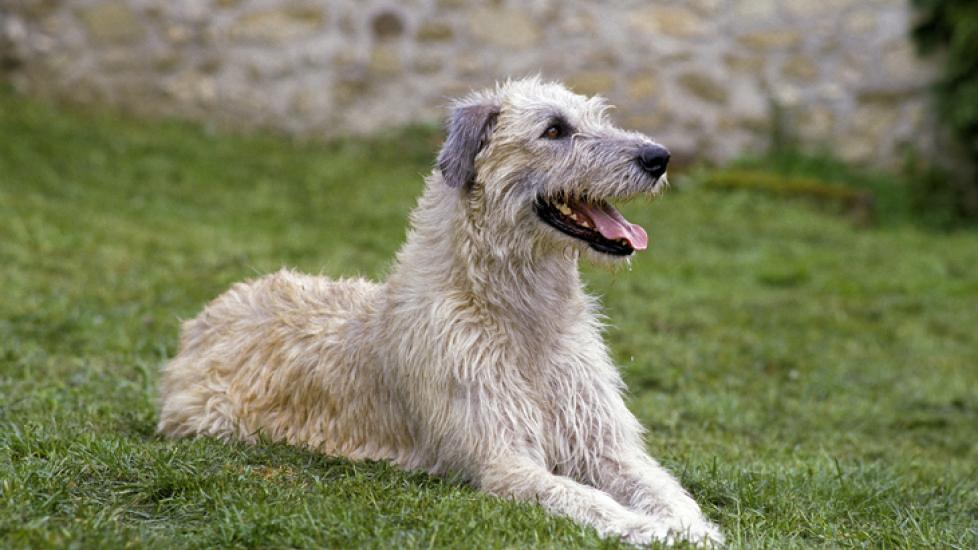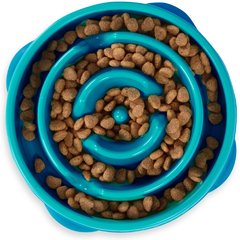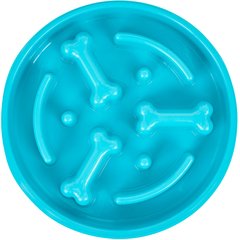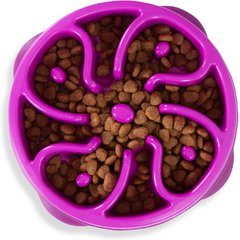Irish Wolfhound
iStock/slowmotiongli
Irish Wolfhounds are a docile giant dog breed with a dignified appearance and a long, fascinating history.
They were created by breeding Middle Eastern hounds with the native dogs of Britain. The first recorded report of an Irish Wolfhound is in a letter by a Roman statesman in 391 AD, according to the Irish Wolfhound Club of America. The Irish Wolfhound earned the name by assisting in hunting Irish wolves in the 1700s.
Today, this gentle and calm breed makes a wonderful house pet—if you have room for them. This giant dog weighs at least 105 pounds and stands 20 inches tall at a minimum. Because they’re so big, the average Irish Wolfhound lifespan is just 6–8 years.
Caring for an Irish Wolfhound
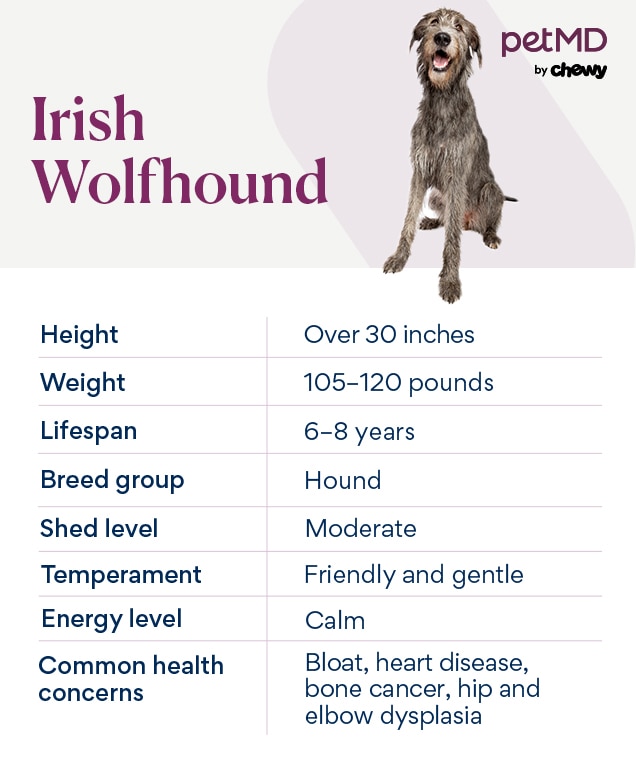
Despite their intimidating size, huge Irish Wolfhounds are a gentle, calm breed that craves affection. They are affectionate with most people and generally patient with children. Many challenges associated with an Irish Wolfhound’s size can be solved by early socialization and obedience training.
Because of the Irish Wolfhound’s history as a hunting dog, they can have a strong prey drive. A home with a (tall!) fenced-in yard will keep them from chasing neighborhood wildlife.
Irish Wolfhound Health Issues

The Irish Wolfhound has a handful of serious health conditions pet parents need to stay vigilant for and pet health insurance might be a good investment. But even with proper care, Irish Wolfhounds have a shorter life expectancy than smaller breeds, at around 7 years.
Gastric Dilatation-Volvulus (GDV) and Bloat
Gastric dilatation-volvulus, a severe form of bloat in dogs, is a condition that occurs suddenly and requires immediate life-saving intervention.
GDV happens when the stomach fills up with food or gas, causing expansion and increased pressure. The stomach can then rotate, which causes inadequate blood supply to the spleen and stomach. If not treated quickly, shock, tissue damage, and even death can occur.
Increased risk is seen in:
-
Older dogs that have a deep chest (such as the Irish Wolfhound)
-
Dogs fed from elevated bowls
-
Dogs fed only once per day instead of multiple meals
Immediate veterinary intervention is needed to stabilize and treat GDV. The longer a dog has this condition without intervention, the greater the risk of death.
Symptoms include retching without producing vomit, a swollen abdomen, drooling, and collapse. To prevent GDV, a prophylactic gastropexy procedure can be performed to secure the stomach to prevent it from twisting. This is often done at the same time as the dog’s spay or neuter surgery.
Bone Cancer (Osteosarcoma)
Osteosarcoma is an aggressive bone cancer Irish Wolfhounds are predisposed to. This is the most common type of bone tumor found in dogs, especially larger breeds.
The first symptom is usually lameness or limping. If you notice this in your dog, a veterinarian may take X-rays to look for this type of cancer.
If osteosarcoma is diagnosed, the most important first step is pain control. Then, the recommendation is usually removal of the affected area. In most cases, this involves the amputation of a limb.
Chemotherapy treatment is recommended following the removal of the tumor to slow the spread to other areas of the body.
Hip Dysplasia
Hip dysplasia is a condition where the hip joint doesn’t develop properly and becomes loose. This can be influenced by growth rate, hormones, diet, and exercise.
Hip dysplasia can cause degenerative joint disease and osteoarthritis. This arthritis leads to pain, limping, and difficulty standing.
Maintaining a lean body condition is important for preventing arthritis. Many vets recommend low-intensity exercise, omega-3 fatty acids (fish oil), and joint supplements containing glucosamine and chondroitin for dogs diagnosed with hip dysplasia. In severe cases, surgery may be needed.
Elbow Dysplasia
Elbow dysplasia, like hip dysplasia, is a condition where the elbow joint develops abnormally. This is usually influenced by genetics, abnormal/rapid growth, diet, and trauma.
The condition can cause pain and lameness, and it can progress into arthritis. Treatment of elbow dysplasia varies based on the severity, but surgery is required in most cases.
Dilated Cardiomyopathy (DCM)
Dilated cardiomyopathy (DCM) is degeneration of the heart that causes the muscle of the left ventricle to become very thin and pump weakly. The symptoms of the disease may occur suddenly or progress gradually as the disease worsens over time. DCM can eventually lead to congestive heart failure.
DCM is a very serious condition that requires intensive treatment, and not all dogs will return to normal.
What To Feed an Irish Wolfhound
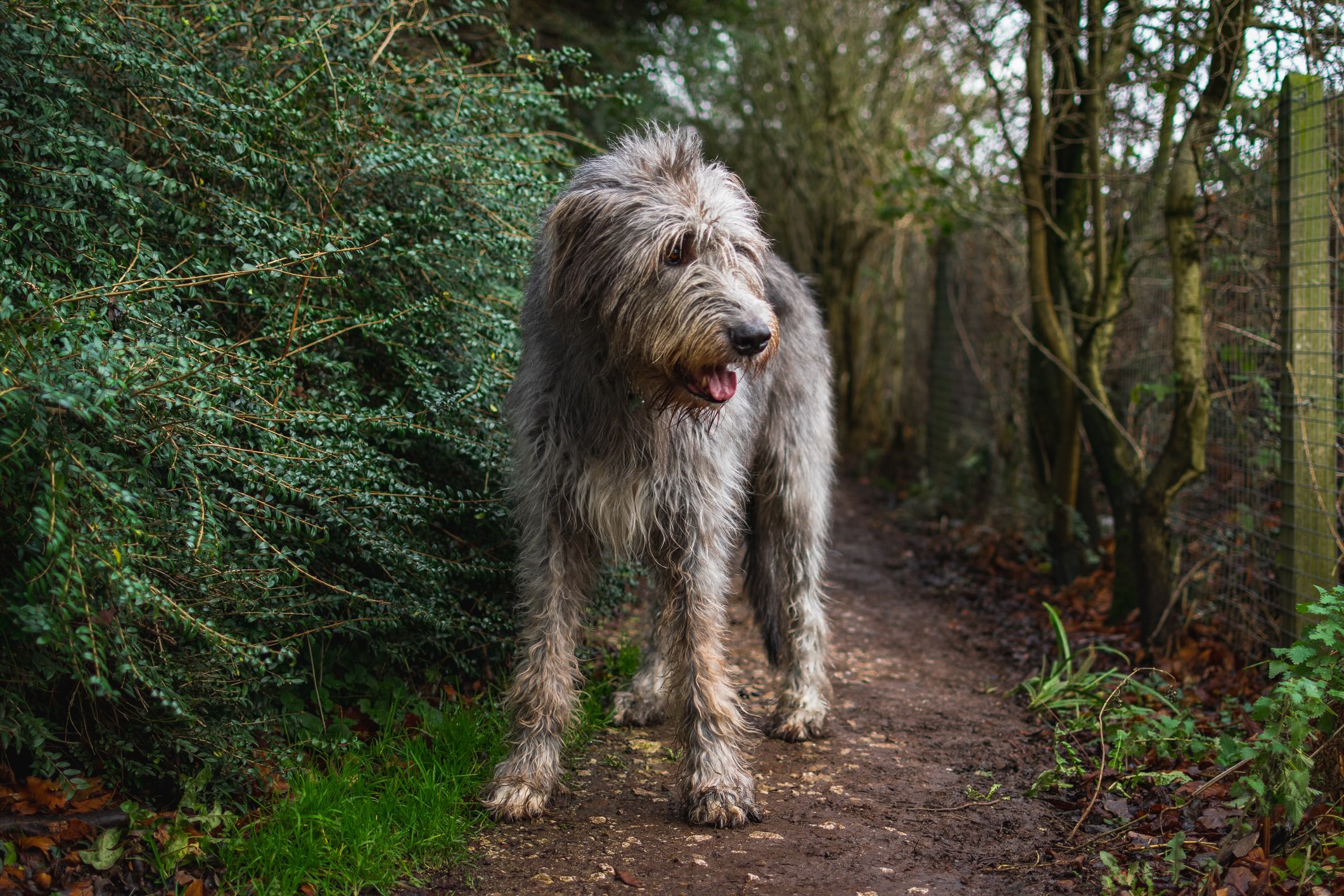
Feeding commercial kibble or wet food that’s compliant with Association of American Feed Control Officials (AAFCO) standards is a good way to make sure your Irish Wolfhound receives a complete and balanced diet.
As a giant breed, Irish Wolfhound puppies need to grow at a steady rate so their muscles and bones grow in unison. The bone and joints can become weak if their bones grow too quickly, and additional body weight places extra strain on these weak spots. Hip dysplasia and elbow dysplasia can also happen due to rapid growth.
To maintain a healthy growth rate in Irish Wolfhound puppies, proper amounts of fat, protein, and carbohydrates are necessary. Puppies can get all their nutrition through AAFCO-compliant puppy foods designed for giant and large-breed dogs.
Talk with your veterinarian about which diet is best for your dog.
How To Feed an Irish Wolfhound
The Irish Wolfhound does best if fed about every 12 hours as an adult. Because the breed is susceptible to bloat and GDV, take some precautious during mealtimes:
-
Feed your dog multiple meals per day instead of one big meal
-
Do not let your Irish Wolfhound dog exercise right before or after eating
-
Do not use a raised food bowl, as this may increase the risk of bloat
-
Slow your Irish Wolfhound down with a slow-feeder bowl
How Much Should You Feed an Irish Wolfhound?
Just like humans, the recommended caloric intake for an Irish Wolfhound varies from dog to dog depending on their size, metabolism, and activity level. The best way to determine how much to feed your dog is to talk with your veterinarian and consult the feeding guide labels on the dog food packaging.
Maintaining a lean body condition and healthy weight are important for protecting an Irish Wolfhound’s joints.
Nutritional Tips for Irish Wolfhounds
Irish Wolfhound dogs may benefit from the addition of omega-3 fatty acids (DHA/EPA) into their diets.
Omega-3 fatty acids can be found in skin and joint supplements, fish oil, and even in some specially formulated dog foods. These fatty acids will act as natural anti-inflammatories that help to support the skin, coat, kidneys, joints, and heart.
Never give your dog a supplement without speaking to your vet first.
Behavior and Training Tips for Irish Wolfhounds
Irish Wolfhound Personality and Temperament
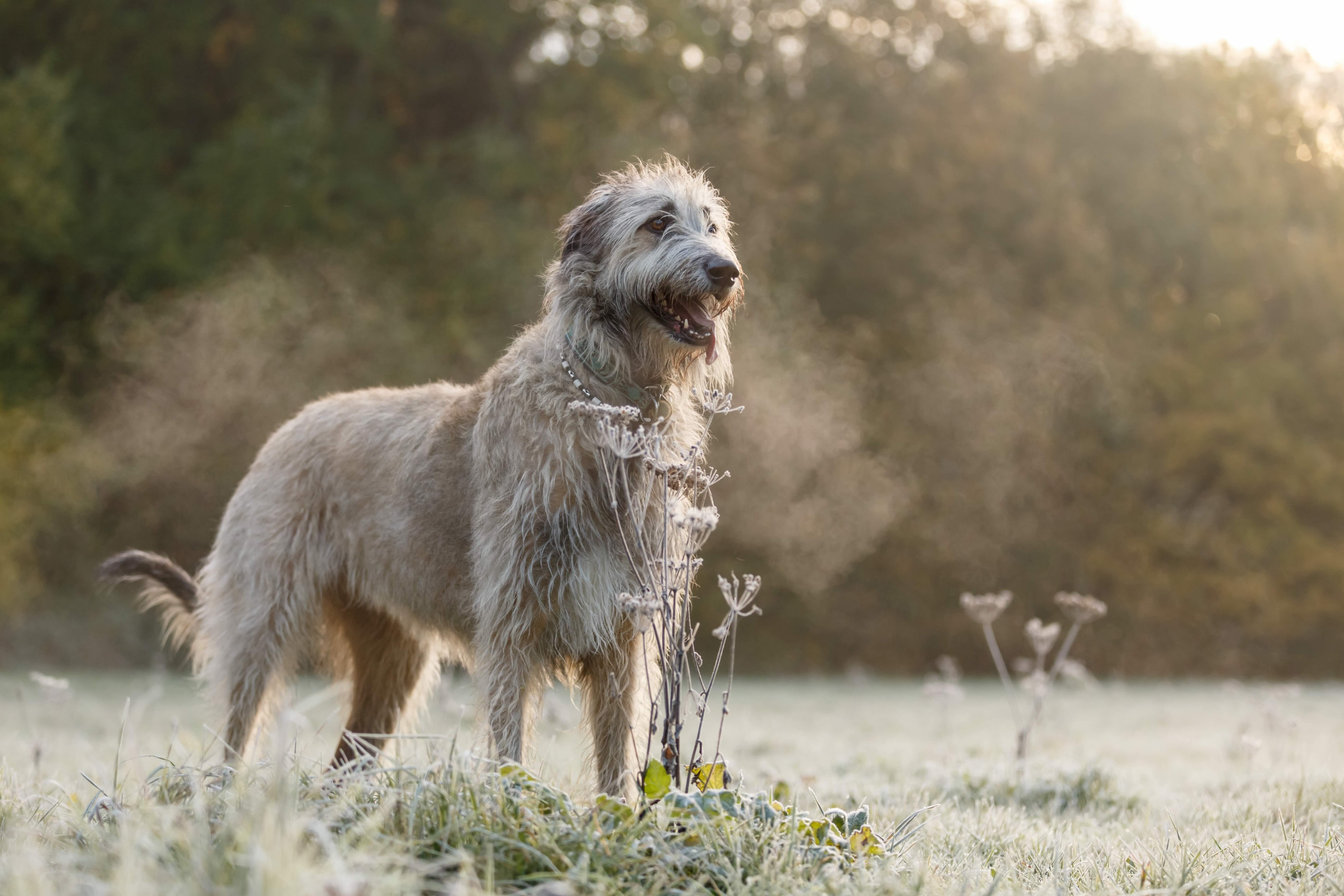
Every dog is an individual, but the Irish Wolfhound temperament is generally calm, gentle, and easygoing. Wolfhounds will become accustomed to nearly any level of activity, but they should be exercised regularly to limit health concerns and prevent obesity.
Most Irish Wolfhounds are comfortable with children and with other dogs if they are socialized at an early age. That said, they can have a powerful prey drive and may chase smaller animals, such as cats, or bolt to catch a squirrel while on a walk.
Irish Wolfhound Behavior
Most Irish Wolfhounds do not bark to excess, but they will alert you if anything is amiss. Some might develop separation anxiety when left alone, so they shouldn’t spend hours apart from their family. Increasing physical and mental activity will also help prevent anxiety from developing.
Irish Wolfhound Training
Irish Wolfhounds are sensitive and eager to please, so they can easily be trained by using positive reinforcement. Begin socializing your Irish Wolfhound puppy as soon as you bring them home, and ask your breeder how they approached socialization as well.
Fun Activities for Irish Wolfhound
-
Tracking
-
Racing
-
Obedience training
Irish Wolfhound Grooming Guide
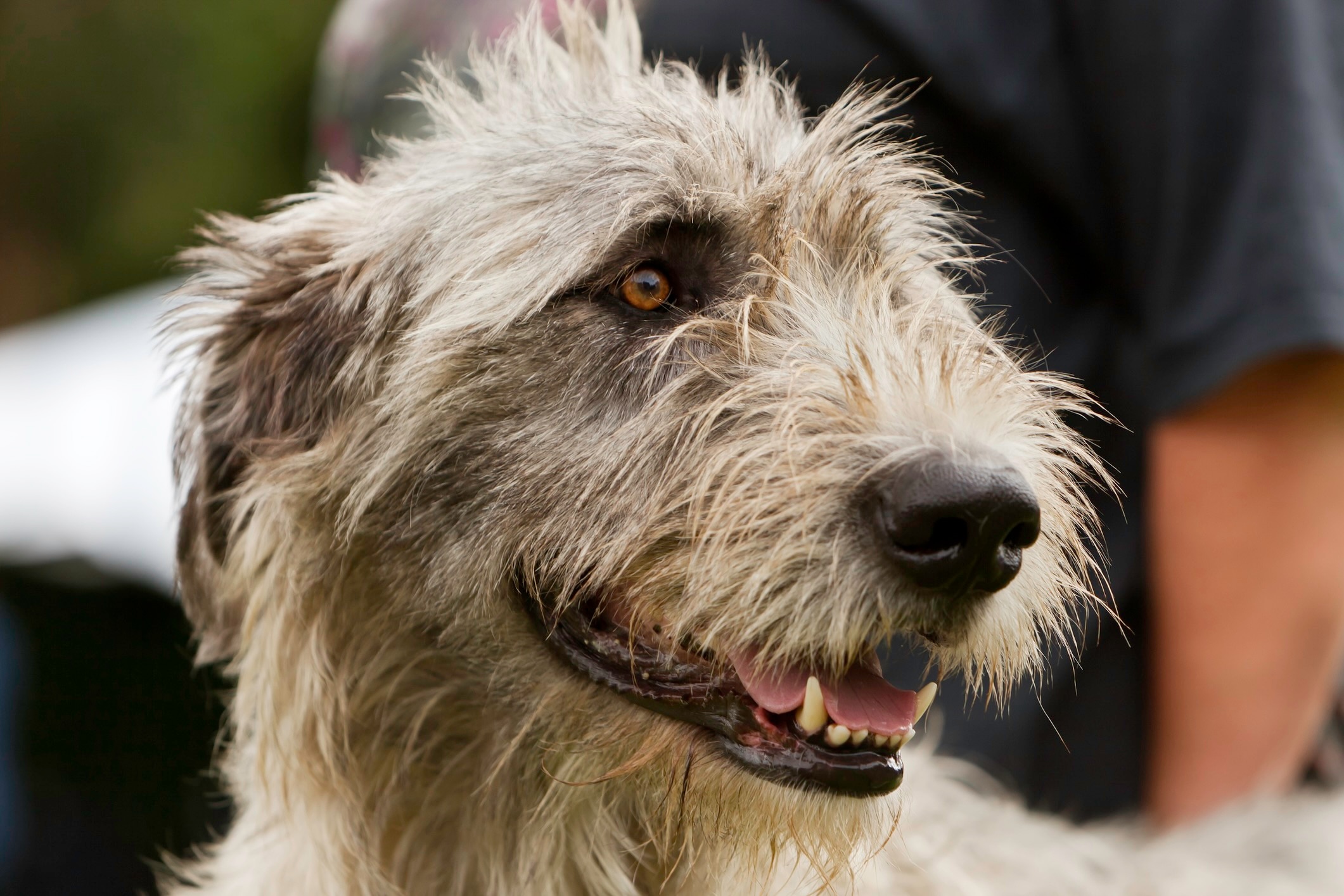
The Irish Wolfhound has a wiry, medium-length coat that comes in a few colors; there are brindle, cream, gray, silver, and black Irish Wolfhounds, among other colors and patterns.
The dogs have minimal grooming needs. And while they’re moderate shedders, they don’t drool excessively.
Skin Care
Irish Wolfhounds do not require special skin care. They should be bathed with a dog-specific shampoo for wiry hair every one to three months as needed for odor and appearance.
Coat Care
The Irish Wolfhound’s coat doesn't form mats or knots easily, but weekly brushing is recommended to remove loose hairs and reduce shedding.
Every six months, the Irish Wolfhound should be hand-stripped, which is done by hand-plucking or using a stripping rake to remove dead hair.
Eye Care
No special eye-related grooming care is necessary for an Irish Wolfhound. However, if squinting or eye discharge is noted, contact your veterinarian. These can be signs of more serious eye conditions.
Ear Care
Cleaning your dog’s ears every two to four weeks will help to prevent ear infections. If you see any redness or heavy debris in your dog’s ear canal, schedule a vet exam. Your vet can also recommend ear cleaning products to use when cleaning your dog’s ears.
Considerations for Pet Parents
Irish Wolfhound are gentle and sensitive, making them great family dogs when socialized and trained early. Their giant stature should be considered, especially by families with limited space. They may have a strong prey drive thanks to their hunting history, so care should be taken around small animals such as cats or rodents.
Irish Wolfhounds have a fair number of health conditions, making pet health insurance a wise decision. The hardest part about having an Irish Wolfhound is their short lifespan of 6–8 years.
Irish Wolfhound FAQs
How long do Irish Wolfhounds live?
As with many giant breeds, the Irish Wolfhound has a short lifespan, averaging 6–8 years.
Is an Irish Wolfhound a good pet?
Yes, the Irish Wolfhound makes a wonderful pet due to their gentle temperament and desire to please the family. Their giant size makes obedience training crucial, and they’ll pick up cues easily.
Which is bigger, a Great Dane or an Irish Wolfhound?
The Irish Wolfhound dog breed is generally considered the tallest dog breed in the world. The Great Dane, despite being another giant pup, is a bit shorter. Here’s how the two compare:
-
An Irish Wolfhound’s height is 30–32 inches at a minimum.
-
The biggest Great Danes are about 32 inches.
-
Great Danes, however, are heavier than Irish Wolfhounds. They can weigh up to 175 pounds, while an Irish Wolfhound’s weight is around 105–120 pounds.
How much does an Irish Wolfhound cost?
The average Irish Wolfhound price is $1,500–$3,500. You might be able to find a more affordable dog through an Irish Wolfhound rescue.
Do Irish Wolfhounds shed?
Yes, Irish Wolfhounds shed regularly year-round. Regular brushing can help reduce this.
